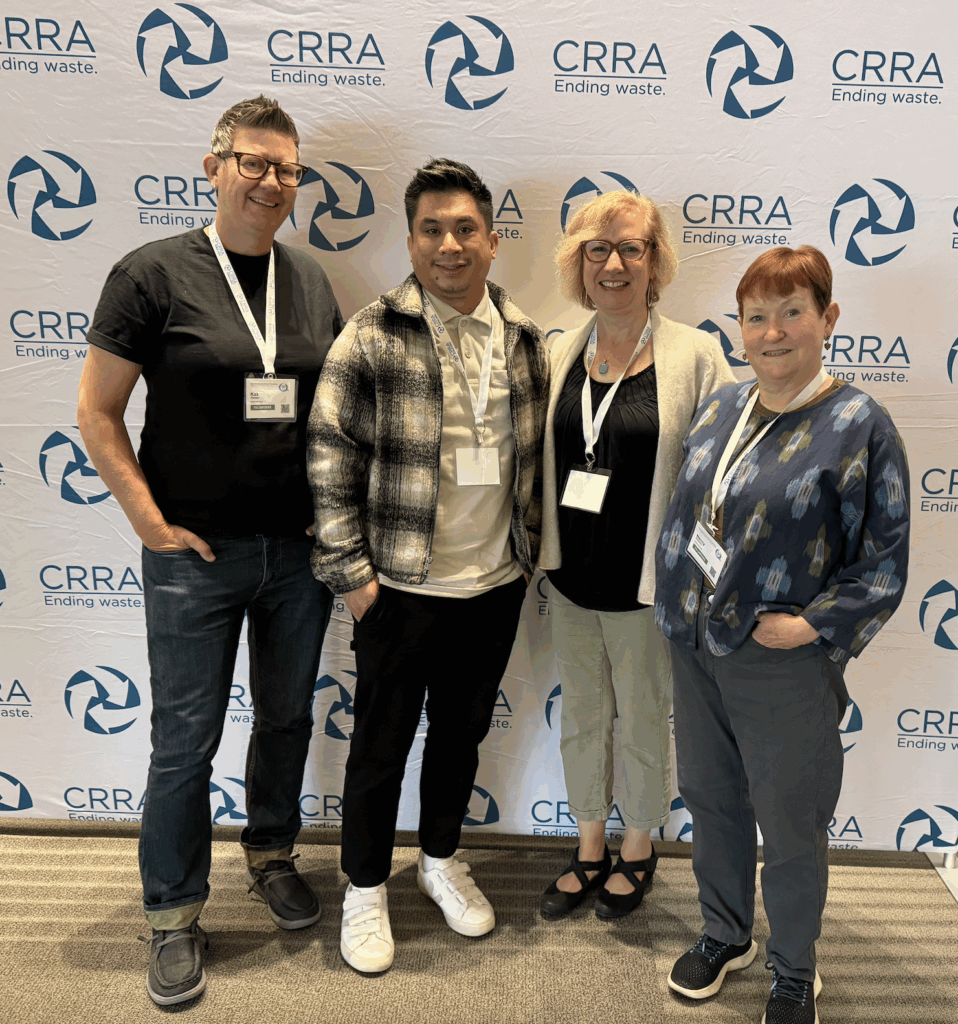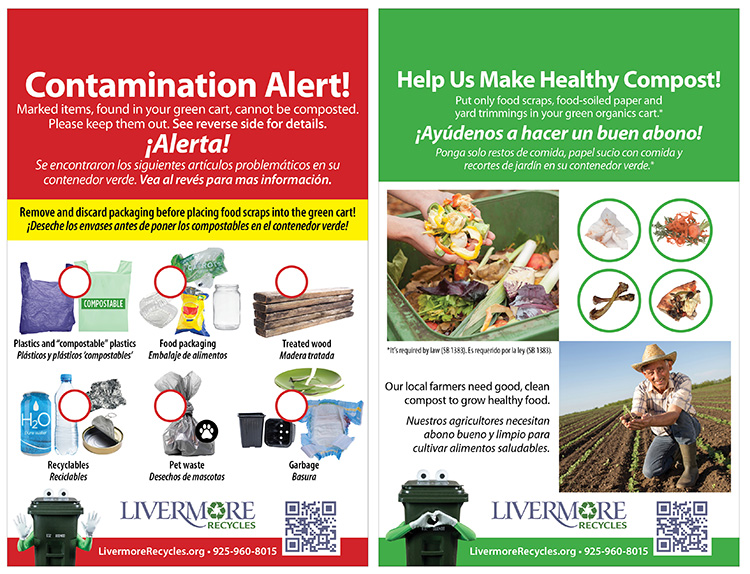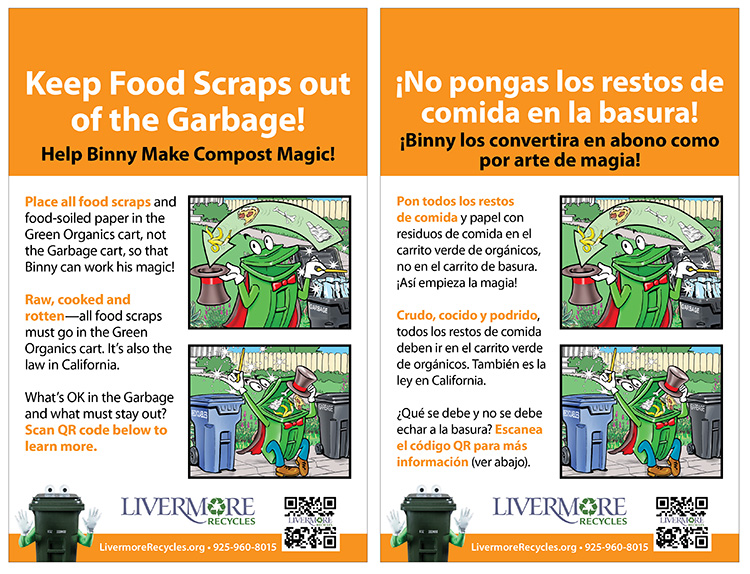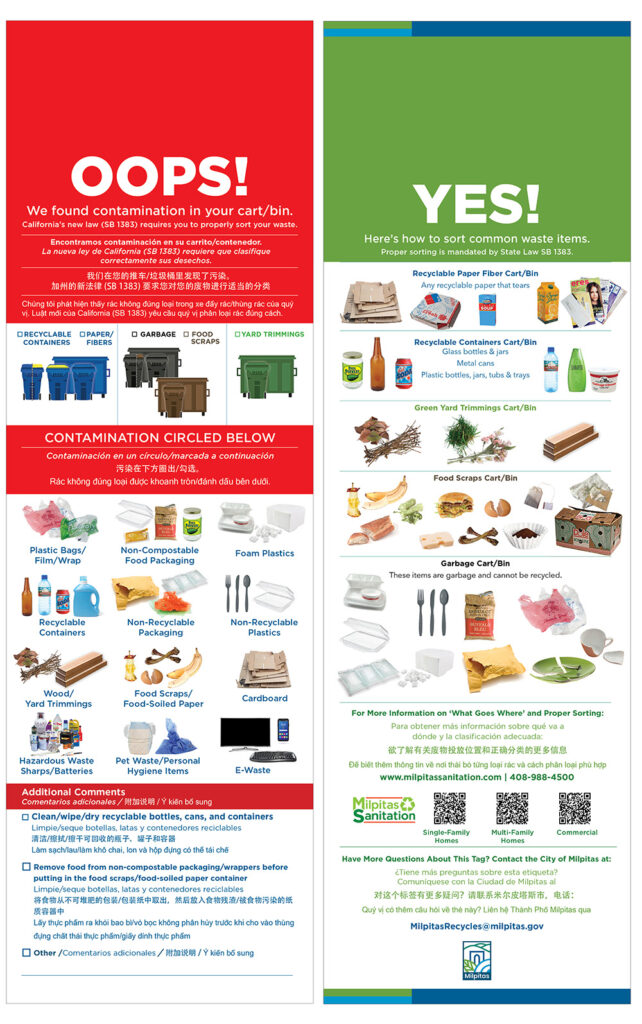 As we have every year for decades (!), members of the Gigantic team attended CRRA 2025, the premier conference for zero waste and resource recovery professionals in California. Each GIS attendee had different highlights and takeaways, but as usual, we brought home information and inspiration to help our work.
As we have every year for decades (!), members of the Gigantic team attended CRRA 2025, the premier conference for zero waste and resource recovery professionals in California. Each GIS attendee had different highlights and takeaways, but as usual, we brought home information and inspiration to help our work.
Kas enjoyed seeing colleagues and making new connections:
One big highlight was getting to spend quality time with our team! It was inspiring to see Myer at his first multi day conference event; Nancy who always asks the most potent questions; and Lisa reflect on changes over the decades she has been involved with CRRA.
It was wonderful to see former Gigantic staffer Freddy Coronado excel at his role as President of NCRA (Northern California Recycling Alliance). And of course, we can’t forget the amazing Abbe sisters’ lyrics and performances at NCRA Players…talk about talent!
Beyond the vibe (which we can all agree was awesome), it was a wonderful opportunity to learn more about AB1383, AB54, new challenges of HHW and a chance to lean into the Behavior Change Technical Council. I am always inspired by presentations on reuse and circular economies — especially the presentation by business incubator Beam.
Stef attended remotely this year; while she missed the networking IRL, she still took away many meaningful tidbits:
Besides deep dives on waste characterization studies, lid flipping and SB54, I found some interesting connections between waste/recycling and energy. The fact that nitrogen production for fertilizer is the eleventh largest energy user—as shared by keynote panelist Cara Rose Ostrander—should give compost another selling point as an alternative to synthetic fertilizer.
The session about zero emission hauler fleets gave me hope that, although requirements for the private sector have been reversed, several haulers that have already started investing in EV trucks are unlikely to reverse course because they have seen dramatic benefits related to safety, noise and air pollution. One hauler’s biggest concern surprised me: it wasn’t EV trucks’ price tags (almost double the cost of conventional trucks) but the rise of energy-hungry AI data centers whose competition for electricity could drive up costs to keep EV fleets running.
Nancy relished the sessions but couldn’t stop worrying:
Spending three plus days in a beautiful, LEED certified hotel, surrounded by over 800 professionals working with heart and discipline to help people and the environment, was stimulating and also comforting. But I felt the constant intrusion of current events and upcoming challenges that will make all our work even harder. Climate change, the current political and social situation that is making recycling and waste reduction more challenging than it needs to be, and the coming threat of AI from social (job losses/shifts) and environmental (massive resource consumption) perspectives too often distracted me and I couldn’t help wondering, am I the only one obsessing like this or are others just putting on a brave front?
Myer was reminded of a primary role of environmental (and really any) communication:
Throughout CRRA I repeatedly heard the phrase, “meeting people where they are,” which truly resonated with me. I saw a great example of this during a session on the Santa Cruz County Green Schools Program. Instead of focusing on a single issue like litter and assuming it was the biggest problem, the program found more success by first surveying students to learn which environmental topics they were genuinely interested in. By addressing the students’ actual concerns, they achieved much higher engagement. They also found success when environmental education was integrated into the curriculum, not just “another thing” to add to it. This approach “turns learning into action,” empowering students with practical experience and according to Amity Sandage, the environmental literacy coordinator for the Santa Cruz County Office of Education, helps to “prepare students to be decision-makers”. Programs like these aimed at young students are a powerful tool for helping them develop sustainable habits that will hopefully last a lifetime.
Lisa was inspired by the connection between what we heard and our day-to-day work:
CRRA always helps me remember that our work matters! It’s too easy to get lost in the daily grind of details and deadlines, forgetting the big picture in the process. The keynote speakers reminded me of our ultimate purpose: to help steward the land. Tom Little Bear Nason, Tribal Chairman of the Esselen Tribe of Monterey County, reminded us that Earth is out of balance, but that Earth, Air, Fire and Water unite all of us, regardless of our skin color, where we live, or which god we worship. His words, along with those of Tim Krantz of the Wildlands Conservancy and Calla Rose Ostrander of the People, Food and Land Foundation, inspired me to reframe our work as ultimately that of restoration: We promote food scrap recycling to create compost to feed the soil; our watershed work helps keep pesticides out and heals the water; and much of our work reduces greenhouse gases and pollution to protect the air and all who breathe it.
After CRRA we get back to work with renewed purpose and look forward to the challenges of the next 12 months … before the next conference!











